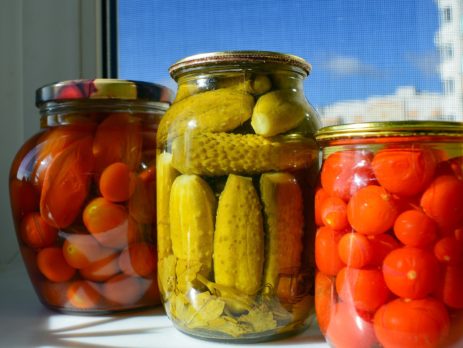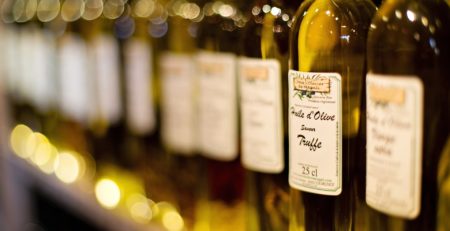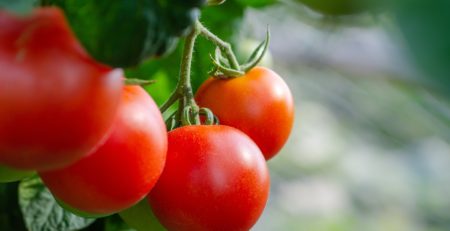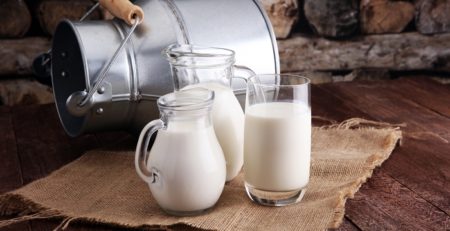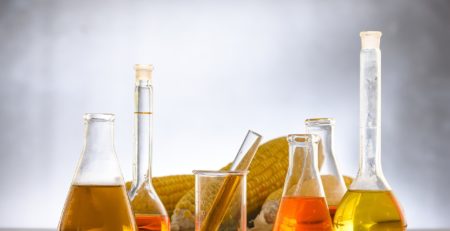Preserves: how to avoid the dangers in home preparations
One of the most ancient Italian culinary traditions that still finds a great use today for its typical territorial characteristics is the preparation of domestic preserves: vegetables and vegetables in oil, pickled or in brine, jams with all types of fruit, sauces.
Domestic preserves are not difficult preparations, but they can become “dangerous” or in any case represent a risk to the health of the consumer if precise precautions are not followed during preparation. Depending on the type of food used and the type of preserves, natural mechanisms can be triggered that can lead to the development of pathogenic microorganisms.
Why can a preserve be a danger?
The greatest danger associated with this type of product is botulism, a foodborne disease caused by the ingestion of food contaminated by the toxin produced by the bacterium Clostridium botulinum: a microorganism that develops in the absence of air, at room temperature, in food characterized by low acidity (pH> 4.4) and high water activity (aw> 0.93) and can be found in the soil, sediments and dust in the form of spores (dormancy of the bacterium and resistant to heating at 100°C).
Although it is a rare disease, the consumption of minimal quantities of contaminated food, associated with the difficulty of diagnosis, can lead to fatal outcomes such as paralysis and death. To date, cases of botulism linked to the consumption of domestic canning are on average equal to 90%, while the remaining 10% concerns industrial products.It is therefore important to act with awareness and conscience during their preparation.
But what is a preserve?
Preserves are food preparations packaged in hermetically sealed containers that undergo heat treatments that allow them to stabilize and be stored for long periods at room temperature. They are divided into acidic and non-acidic preserves and can be in glass, in enough tin, under vacuum.
Preserves must be subjected to one or more stabilization treatments, processes that block the activity of enzymes and microorganisms, naturally present in food, which would cause deterioration and alteration of the food.
The most common thermal stabilization processes are sterilization and pasteurization. The first, used for industrial preserves (vegetables in oil, tuna, canned meat and legumes), uses high temperatures (> 120°C) to destroy all microbial forms and spores. The second consists of a heat treatment that uses lower temperatures (<100°C), which does not allow the destruction of the spores.
To increase the shelf life of these products and decrease the risk of developing pathogens, other treatments are combined such as acidification, reduction of available water by adding solutes (salt or sugar) or storage in the refrigerator. Domestic preserves reflect the latter scenario and could present all favorable conditions for the development of Clostridium.
What must be done to reduce the risk of a preserve?
- first of all check the hygiene of the person (wash your hands often at each start or change of processing), of the kitchen and of all the equipment used (all dishes must be washed thoroughly) including containers and capsules / caps which must be sanitized (in a bain-marie or by simple washing) before filling and also pay attention to the choice and cleaning of raw materials.
- stabilize the product through pasteurization combined with specific treatments such as drying, acidification in order to avoid the germination of botulinum spores.
Below we see some points to pay attention to based on the type of food preserve.
Vegetables in olive oil
The vegetables must be blanched for a few minutes in water and vinegar (in equal parts), this allows the product to be acidified. The wine vinegar must have acidity equal to or greater than 6%. If aromatic herbs and spices are used, they must undergo the same procedure. When they are inserted into the container, any empty spaces must be filled, covered with oil and any air trapped in the food removed. We then proceed with the pasteurization.
Pickled vegetables
The vegetables can be blanched in water or left raw. Once the container is filled, the vinegar is added and pasteurized.In this case, the safety of the product is guaranteed by the acidity of the vinegar. If the preserving liquid consists of one part of vinegar and one part of water, it will be preferable to use white wine vinegar with an acidity equal to or greater than 6% (diluted with an equal amount of water). If you use apple cider vinegar, since its acidity is lower, it cannot be diluted, but it must be used as it is.
Vegetables in brine
Products in brine can present a risk for botulism in the event that the salt concentration is not suitable, for this reason the brine must contain at least 10% salt (100 g of salt for each liter of water).
Jams, jellies and compotes
For jams the food safety of the product will depend on the acidity of the fruit and the amount of sugar used. If you use low acid fruit it is advisable to add lemon juice. As far as sugar is concerned, it is necessary to prefer recipes in which the same amount of sugar and fruit is provided, in any case you should never go below 700 g of sugar per kg of fruit.The sugar content in the compotes is lower, but their safety with respect to the risk of botulism is guaranteed by the high acidity of the product (pH <4.4).
Flavored olive oil
Oils with added aromatic herbs or chilli. The oil does not carry out a bactericidal action, so it is important that the herbs or chilli are blanched in water and vinegar as described above or adequately dried. This is because the possible presence of moisture in the products in oil (in the absence of oxygen), would allow the germination of the botulinum spores.
Tomato preserves
Puree, tomato concentrates and peeled tomatoes are among the most common home preparations. Overhall it is important to use tomatoes with higher acidity or with a pH of 4.3 to reduce pasteurization times and as mentioned to avoid the germination of spores. Otherwise it is possible to acidify them with lemon juice (for 1 liter of tomato juice 2 teaspoons of lemon juice) or with citric acid, but in this case the flavor could change. Once the containers are filled, it is pasteurized (cold or hot).
Domestic preserves such as pesto, natural vegetable preserves or sauces with fish / meat are more dangerous preparations because they are slightly or not at all acidic and should be subjected to sterilization, a process that cannot be obtained at home. For this reason, the only recommended storage method after preparation is freezing, which will serve to block the growth of microorganisms and enzymatic activity.
For all preserves, it is also important to check the pasteurization times and subsequently the hermetic tightness of the containers and the achievement of vacuum. The caps should appear slightly concave and by pressing with your finger in the center you should not hear the “click clack”. After opening, the preserves must be kept in the refrigerator and eaten within 3-4 days or depending on the type of product. If the product is altered it must not be tasted or consumed, but eliminated.

